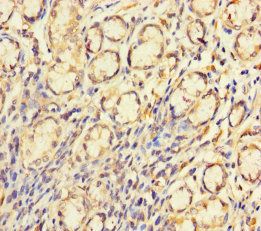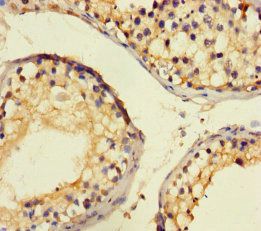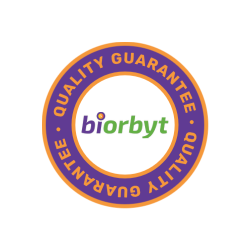You have no items in your shopping cart.
Cart summary
Item 1 of 3
Item 1 of 3
CTDNEP1 Antibody
Catalog Number: orb1269372
| Catalog Number | orb1269372 |
|---|---|
| Category | Antibodies |
| Description | CTDNEP1 Antibody |
| Species/Host | Rabbit |
| Clonality | Polyclonal |
| Tested applications | FC, IHC-P, WB |
| Predicted Reactivity | Bovine, Mouse, Rat |
| Reactivity | Human |
| Isotype | Rabbit Ig |
| Immunogen | This DULLARD antibody is generated from rabbits immunized with a KLH conjugated synthetic peptide between 131-160 amino acids from the Central region of human DULLARD. |
| Concentration | batch dependent |
| Dilution range | For WB starting dilution is: 1:1000For IHC-P starting dilution is: 1:10~50For FACS starting dilution is: 1:10~50 |
| Form/Appearance | Liquid |
| Conjugation | Unconjugated |
| MW | 28 kDa |
| Target | CTDNEP1 |
| UniProt ID | O95476 |
| NCBI | O95476 |
| Storage | Store at 4°C for three months and -20°C, stable for up to one year. As with all antibodies care should be taken to avoid repeated freeze thaw cycles. Antibodies should not be exposed to prolonged high temperatures. |
| Buffer/Preservatives | Supplied in PBS with 0.09% (W/V) sodium azide. |
| Alternative names | CTD nuclear envelope phosphatase 1, Serine/threoni Read more... |
| Note | For research use only |
| Application notes | For WB starting dilution is: 1:1000For IHC-P starting dilution is: 1:10~50For FACS starting dilution is: 1:10~50 |
| Expiration Date | 12 months from date of receipt. |

Western blot analysis in Jurkat cell line lysates (35 ug/lane).
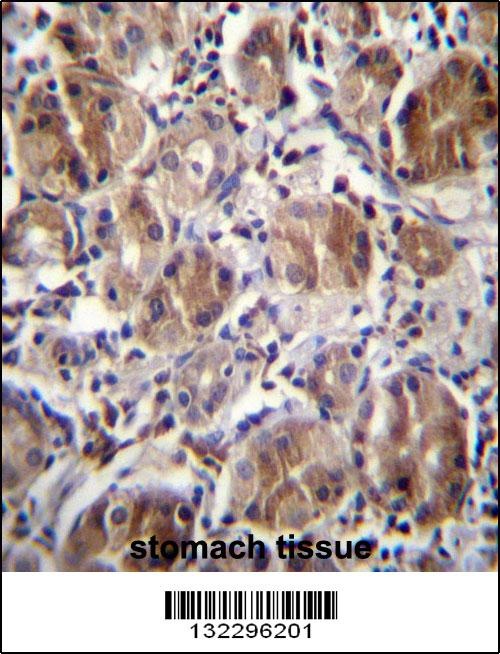
DULLARD Antibdy immunohistochemistry analysis in formalin fixed and paraffin embedded human stomach tissue followed by peroxidase conjugation of the secondary antibody and DAB staining. This data demonstrates the use of DULLARD Antibdy for immunohistochemistry.
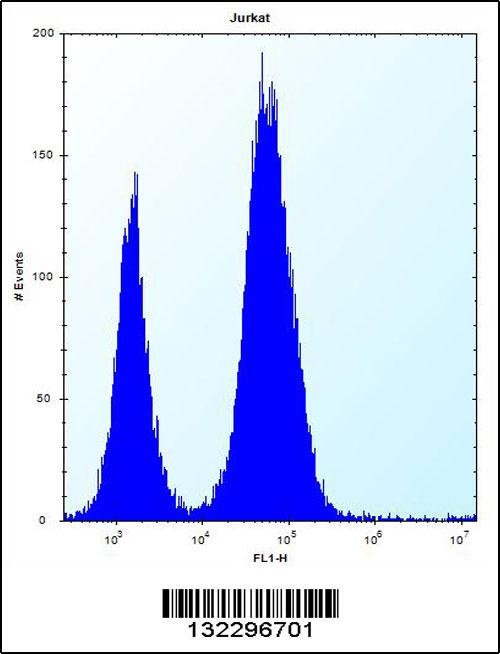
Flow cytometric analysis of Jurkat cells (right histogram) compared to a negative control cell (left histogram). FITC-conjugated donkey-anti-rabbit secondary antibodies were used for the analysis.
CTD nuclear envelope phosphatase 1 antibody [orb242723]
ELISA, IHC
Human
Rabbit
Polyclonal
Unconjugated
50 μg, 100 μgCTD nuclear envelope phosphatase 1 antibody (Biotin) [orb242724]
ELISA
Human
Rabbit
Polyclonal
Biotin
50 μg, 100 μgCTD nuclear envelope phosphatase 1 antibody (FITC) [orb242725]
Human
Rabbit
Polyclonal
FITC
50 μg, 100 μgCTD nuclear envelope phosphatase 1 antibody (HRP) [orb242726]
ELISA
Human
Rabbit
Polyclonal
HRP
50 μg, 100 μg
Submit a review
Filter by Rating
- 5 stars
- 4 stars
- 3 stars
- 2 stars
- 1 stars

